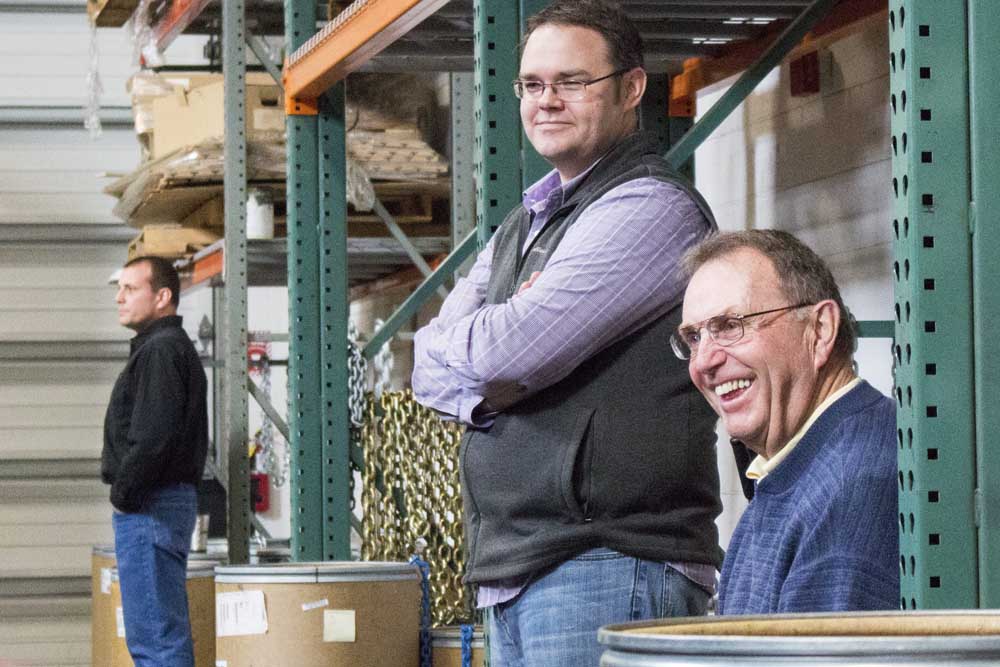Water filtration system is up and running
Published 4:00 pm Sunday, January 5, 2003
GEARHART – Terry Ager, water quality technician for the city of Warrenton, said after the city’s new water filtration center went online in mid-September he started getting a few calls from people saying the water tasted funny.
Trending
Ager said he just had to explain to them the water was by far purer than the city had ever known.
“It (the filtration plant) pulls the taste, color and minerals out of the water,” he said. “It pulls out the old ambiance.”
The new facility processes about 6.5 million gallons of water a day from the Lewis and Clark River and three of its tributaries: Big South Fork, Little South Fork and Camp C. Creek. Despite being owned and operated by the city of Warrenton, the facility is on about 14 acres, 11/2 miles off Lewis and Clark Road east of Geahart, nestled in Weyerhaeuser forest land.
Trending
Water in Warrenton has always been clean and Ager, and the filtration plant operator Bob Bingham, stressed the small city and other communities served by Warrenton’s water supply have never suffered any outbreak of water-borne illness.
Some residents expressed concern when the city sent out notices informing them the water treatment plant was in violation of law, but Ager said that was a “boilerplate letter” state law required the city to send out even though the water treatment facility posed no risk to the city or its water customers.
To comply with federal and state laws, Warrenton City Engineer Alan Johansson said the city had to build a new water filtration facility to replace its outdated treatment plant. The new $8 million project built by Pease & Sons Construction of Tacoma, Wash., was originally paid for by state loans from the state Department of Environmental Quality and a safe drinking water fund by the Department of Economic and Community Development.
Johansson said those loans will be repaid by a revamped water billing system that now adds a service charge for those people who use more than 1,000 gallons, on top of a flat rate of $18 per month. Johansson said Geahart, Surf Pines, Rilea Armed Forces Training Center, other small communities and private homes on unincorporated land use Warrenton water, and he wanted them to know the water system is now fully compliant with all regulations.
Newest technology
“The city is now meeting all state and federal requirements of the Clean Water Act,” he said.
And it’s doing so with the latest technology in water filtration.
After entering the plant, one is struck by a cacophony of hissing, humming and other mechanical noises as water is forced through the filtration process. But after becoming accustomed to the noise one is also struck by the cleanliness of the place.
Bingham said the filtration system is a relatively clean operation but added he takes the time to personally dust most of the pipes and mop and sweep the floor to keep the city’s investment in top shape.
“I take a lot of pride in this plant and I want to make it worth the public’s money,” he said.
Completely controlled by a computer system, the plant is staffed full time by just its manager Bingham, who keeps tabs on the system through one monitor. The plant uses clusters of 90 tube-shaped filters about 3 feet long and 8 inches in diameter that cost about $500 a piece.
These filters are filled with thousands of hollow fibers that allow water to pass through but are too small for bacteria to get by. Ager said the filters keep out the microscopic parasite giardia lamblia, which is to blame for “beaver fever” or a sickness that can cause chronic diarrhea, bloating and severe gas.
After the water has gone through the filters, Bingham said it is disinfected using sodium hypochloride. This is an improvement to Warrenton’s older system that used chlorine, and Bingham said as the substance’s ingredients are salt, water and electricity, it’s easy to produce on site and use. After the hypochloride is created, it is added to filtered water as well as lime, to stabilize acidity levels, and fluoride.
“It’s nice we don’t have to put chemicals in the water to clean it,” Ager said, explaining the filtration system cleans the water of its turbidity, and the last step is just disinfection.
After being disinfected Bingham said the water is then sent to a 3. 5 million gallon tank where it is held before being sent out for distribution.
The only wastewater generated by the plant is water used in a “backwash cycle” that occurs about every 210 minutes in each filter group. This process is essentially cleans the filters using water and air pressure to force sediments and other debris off the filter. The water used in the process then goes out into a holding pond before it is gradually released into a creek running near the property. No chemicals are added during the filtration process, so the water can simply be dumped outside the facility Bingham said.
“We send it back to mother nature. We just cleaned it up for her,” he said.









